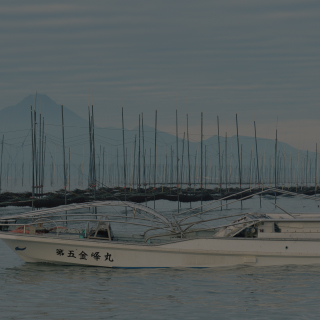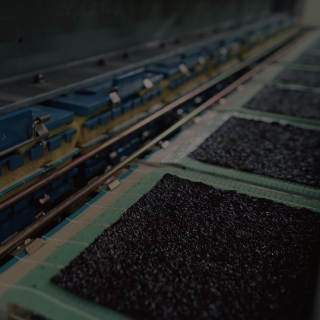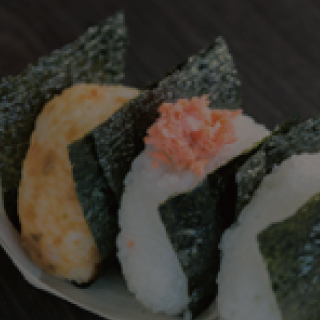
what we are particular about
Commitment
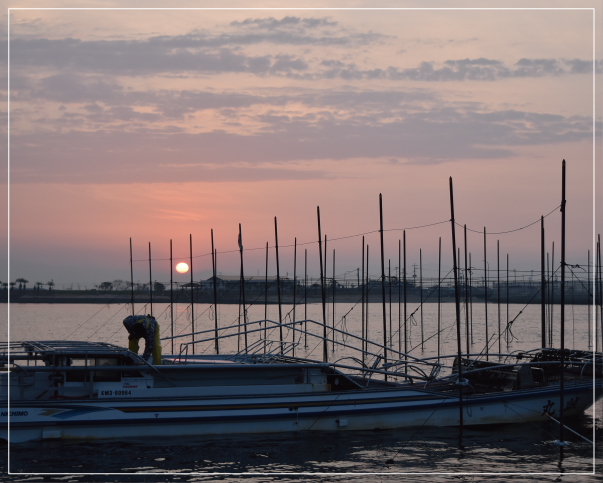
Method of culturing
The most characteristic feature of nori production in the Ariake fisheries is the “pole method”, which maximizes the benefits of the big differences in the ebb and the flow of the tides in the Ariake Sea. At low water level, Nori on a pole is thoroughly exposed to sunlight for several hours every day. Resulting in sunbathing Nori, it brings out “umami”.
The three of us have improved this method by hanging our nets much higher than other producers, which means that our Nori is exposed to sunlight for much longer period than normal.

Processing process
Low-Temperature Drying and Fine Adjustment of Salinity Concentration
After harvesting, Nori is slowly dried at low- temperature to prevent the cell walls of Nori from being destroyed by high-temperature heat. We are also particular about adjusting salinity concentrations as it affects the quality (nutrition and Umami flavor). By controlling the best salinity concentrations, we can keep umami and flavor in Nori itself.
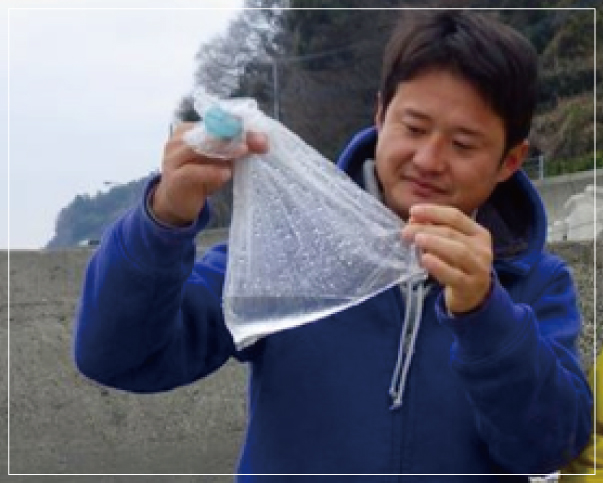
Underground seawater
Our Newest Challenge – First in Japan! Underground Seawater Nori -
Before putting nori into the dryer, we use 100% underground seawater to clean our nori. Seawater, which has been traditionally used to clean nori, contains more than a few impurities. It is also unstable in that the water quality fluctuates depending on the weather. In that respect underground-seawater is almost aseptic and the water quality is stable. This significantly contributes to the hygienic improvement of nori quality. Underground seawater has less dissolved oxygen and more amino acids, so nori processed with the water is considered to have more umami and taste better.
What is underground seawater?
Underground-seawater is naturally purified seawater that has permeated underground. Filtered through tidelands and sandy soils, It is virtually free of microorganisms and is stable throughout the year. It is also called underground permeated seawater.


